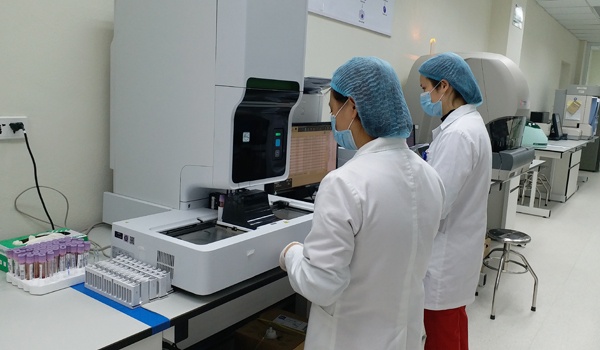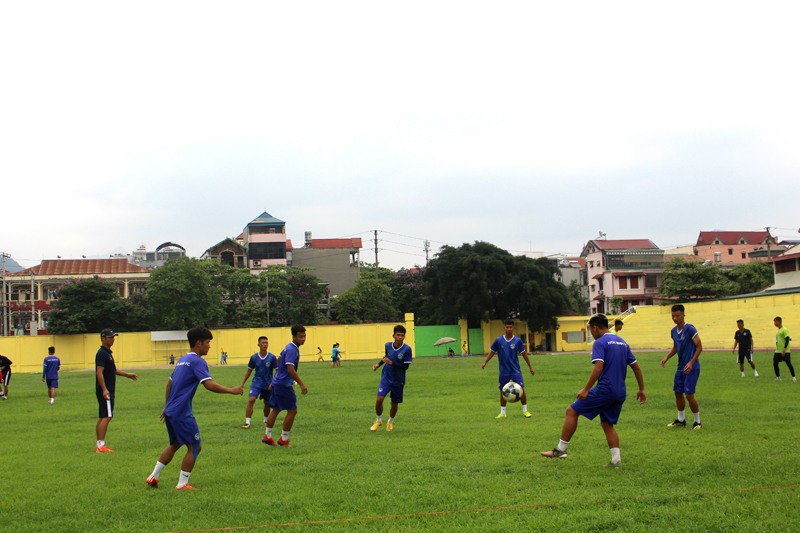In addition to ambulances, in certain cases, patients are also transported by military aircraft. So, how are Vietnam’s regulations on objects, conditions and procedures for emergency transport by military aircraft?

1. Entities subject to emergency transportation by military aircraft
According to the Regulation issued together with the Circular No. 193/2016/TT-BQP of the Ministry of National Defense of Vietnam, conditions for emergency transportation by military aircraft are as follows:
Article 4. Conditions for emergency transportation by military aircraft
Subjects specified in Clauses 1 and 2, Article 2 of this Regulation who are injured or sick (hereinafter referred to as "patients") may be transported by military aircraft for emergency treatment when fully meeting the following conditions:
1. Injured, emergency condition, acute illness that is showing life-threatening symptoms that are beyond the capacity of emergency and treatment of military medical establishments, patients should be immediately transferred to the following hospitals as designated by the Director of the Military Medical Department.
2. Having enough elements to ensure flight and ensure flight safety.
02 subjects in Clauses 1 and 2 Article 2 are:
- Officers, professional soldiers, non-commissioned officers, soldiers, workers, public employees and contract workers under military units on duty on seas and islands under the sovereignty, sovereign rights and national jurisdiction of the Socialist Republic of Vietnam; remote areas with difficulties in means of transport.
- Vietnamese citizens operating legally in the seas and islands under the sovereignty, sovereign rights and national jurisdiction of the Socialist Republic of Vietnam.
Thus, when meeting the conditions specified in Article 4 of the Circular No. 193/2016/TT-BQP of the Ministry of National Defense of Vietnam, the 02 mentioned above subjects will be transported by military aircraft for emergency transport.
2. Principles of emergency escort:
Before being transported to a military plane, the patient must be given first aid. In order to ensure the health and life of patients, during the flight and the time of transporting the patient from the airport to the receiving hospital, it must comply with the quantity and quality of medical staff, equipment, vehicles, tools and drugs and chemicals necessary to carry out emergency resuscitation measures on the aircraft.
3. Procedures for organizing emergency escort:
Procedures for organizing emergency escort are prescribed in Article 10 of the Circular No. 193/2016/TT-BQP of the Ministry of National Defense of Vietnam, specifically as follows:
- Military medical establishments under the professional direction of superior military medical agencies and the host hospital through the telemedicine system and the media, organize first aid and emergency treatment for patients on the spot.
- When receiving the notification of an aircraft, the military medical facility is responsible for organizing the transport of patients from the place of emergency and treatment to the landing area and handing them over to the emergency escort team. The contents of handover include: Medical records, the process of emergency treatment at the unit, the necessary requirements for emergency resuscitation on the way.
- The emergency escort team is responsible for emergency treatment of the patient from the time of handover, during the time on the plane until handing over to the receiving hospital.
- The hospital receives and organizes ambulances, receives patients at the airport and transports them to the hospital; the handover between the emergency escort team and the receiving hospital must be recorded in writing, fully recording the pathological developments and emergency resuscitation measures taken on the aircraft.
4. Procedures for reporting and processing emergency transportation information:
Procedures for reporting and processing emergency transportation information are prescribed in Article 6 of the Circular No. 193/2016/TT-BQP of the Ministry of National Defense of Vietnam, specifically as follows:
- When a patient enters an emergency at a military medical facility, and there is an appointment for emergency transport of the patient by military aircraft, the person in charge of the military medical facility shall do the followings:
+ For the area of Spratly Islands and DK1 rig house: Timely report the patient's condition to the Director of the host hospital and the Chief of Military Medicine at all levels up to the Chief of Military Medicine of the Navy;
+ For islands near the coast and in deep and remote areas: Timely report the patient's condition to the Chief of Military Medicine at all levels up to the Chief of Military Medical Region or the Chief of Military Medicine of the Navy, Chief medical officer of Army Corps 15, Chief of military medical officer of Army Corps 16.
+ For islands near the coast and in deep and remote areas: Timely report the patient's condition to the Chief of Military Medicine at all levels up to the Chief of Military Medical Region or the Chief of Military Medicine of the Navy.
- The director of the host hospital, the director of military medicine in the Navy, the director of the military medicine of the military zone, the director of the military medicine of the 15th and 16th Army Corps, report to the Military Medical Department on the patient's condition and request to be transported by military aircraft:
+ Contents of the report include: Patient's full name, age, rank, position or occupation; medical condition and process of first aid, emergency, disease prognosis; the necessary requirements for emergency resuscitation in transit; equipment, vehicles, medical instruments, drugs, chemicals, emergency escorts on the plane;
+ Report form by phone, then in writing.
- Flight organization:
+ When picking up the patient and the emergency escort, the flight crew guides the location for the person, the location to deploy the necessary medical equipment and tools and the mandatory requirements to follow to ensure safety during the flight;
+ In case of unforeseen events due to sudden bad weather or incidents, the flight crew is responsible for handling and reporting to the Command Center for assistance;
+ After the engine is turned off, the aircraft propeller stops completely before opening the door and transferring the patient; at the end of the emergency flight, the air force units synthesize and report to their superiors.
- Report after receiving the patient for treatment:
+ The Military Medical Hospital that receives patients promptly reports the results of receiving patients for treatment to the Military Medical Department;
+ The Military Medical Department summarizes the situation and reports it to the Head of the General Staff (through the Operations Department, the Rescue and Rescue Department) and the Head of the General Department of Logistics.
In this process, there is a regulation that has been amended by Clause 5, Article 1 of Circular No. 127/2020/TT-BQP. According to the Regulation issued together with the Circular No. 193/2016/TT-BQP of the Ministry of National Defense of Vietnam, only when the propeller stops completely can the door be opened and the patient transferred, but the Circular No. 127/2020/TT-BQP has allowed patient to be transferred without shutdown from December 05, 2020, specifically as follows:
After landing, based on actual conditions, the flight captain decides to turn off the engine or keep the engine in operation mode (small throttle) to transfer the patient. During patient transfer, there must be at least one member of the flight crew to guide and control the aircraft approach. At the end of the emergency flight, the Air Force units made a report to their superiors.
This change was necessary because the critically ill patient could not wait until the plane was completely shut down. Therefore, after 3 years of implementation, the Ministry of Defense of Vietnam issued Circular No. 127/2020/TT-BQP to amend the shortcomings of the previous Circular No. 193/2016/TT-BQP.
The above is the full advice of LAWNET on emergency transportation by military aircraft. Hopefully, this information can help customers and members better understand the law on the use of military aircraft to transport patients in seas, islands, and remote areas when in need of emergency.
Phuong Thanh
- Key word:
- Circular No. 193/2016/TT-BQP
 Article table of contents
Article table of contents









